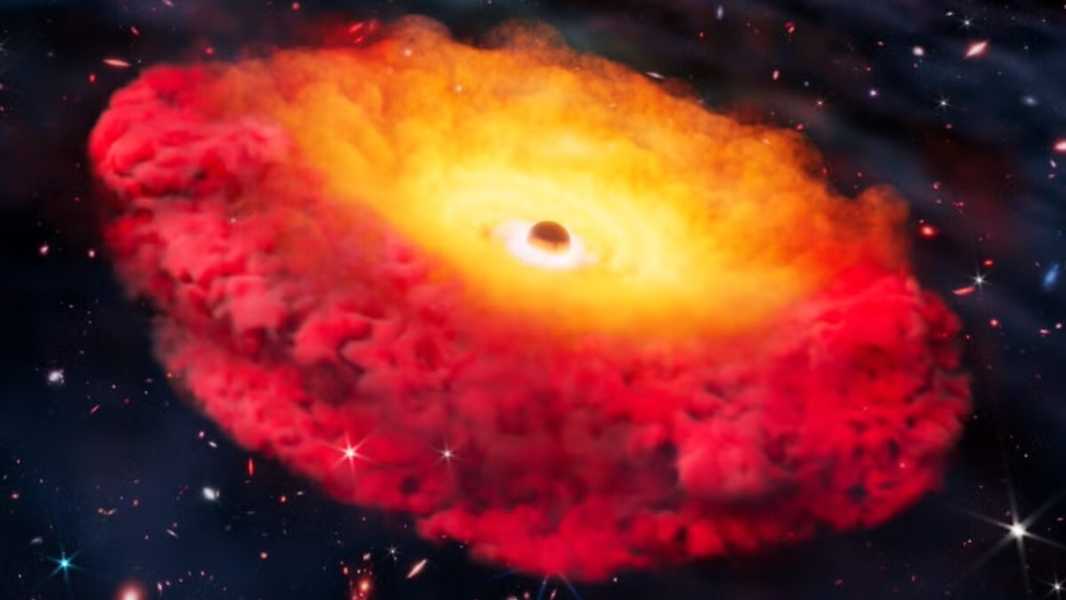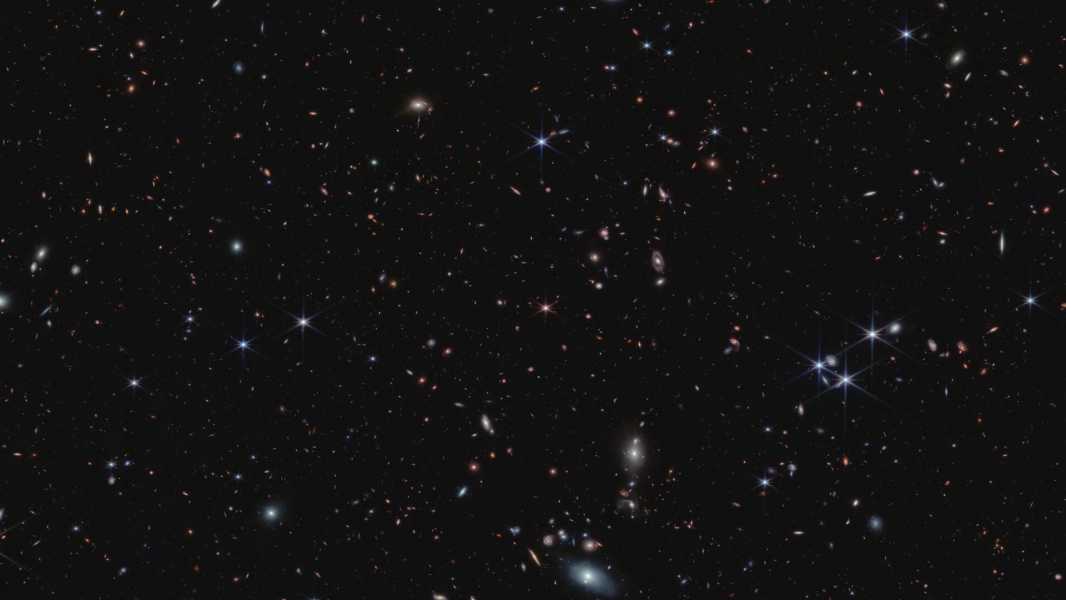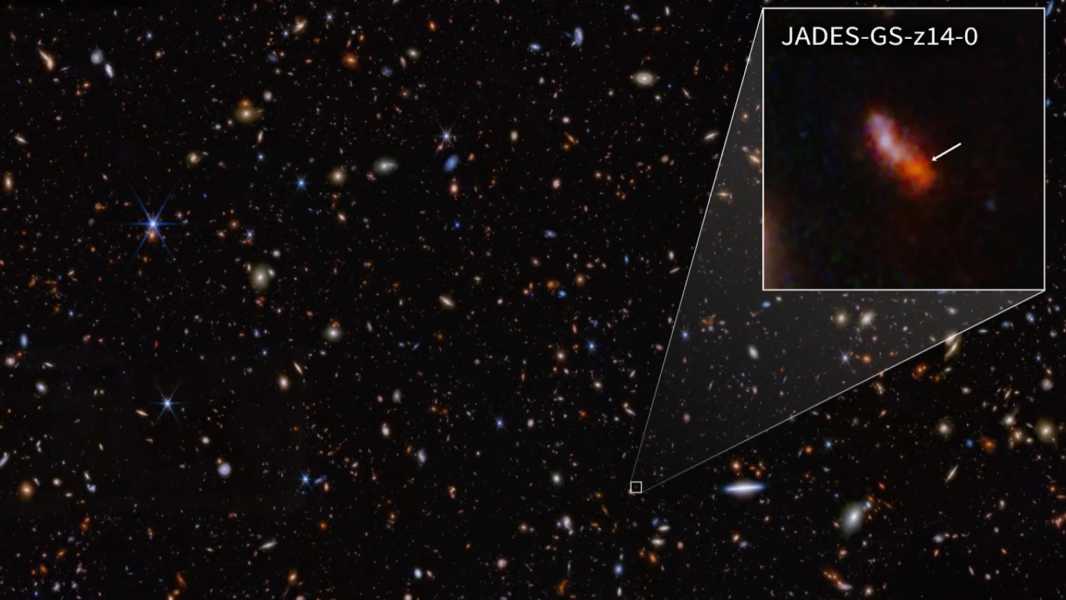
This artist's impression shows the galaxy CAPERS-LRD-z9, which contains the earliest confirmed black hole to date. (Image credit: Eric Zumalt/University of Texas at Austin)
Researchers using the James Webb Space Telescope (JWST) have identified a black hole that is more than 13 billion years old.
The black hole and its host galaxy, collectively known as CAPERS-LRD-z9, were born just 500 million years after the Big Bang. Its characteristics could help scientists better understand what the universe looked like during that mysterious early era, according to a study published Aug. 6 in the journal Astrophysical Journal Letters.
“This is pretty much the limit of what you can see into the past when looking for black holes,” said study co-author Anthony Taylor, an astronomer at the University of Texas at Austin. “We're really pushing the limits of what we can do with current technology.”
You may like
-

James Webb Telescope Discovers New, 'Hidden' Type of Black Hole Never Seen Before
-

James Webb Telescope Sets New Record by Discovering Most Distant Known Galaxy in the Universe
Sourse: www.livescience.com





